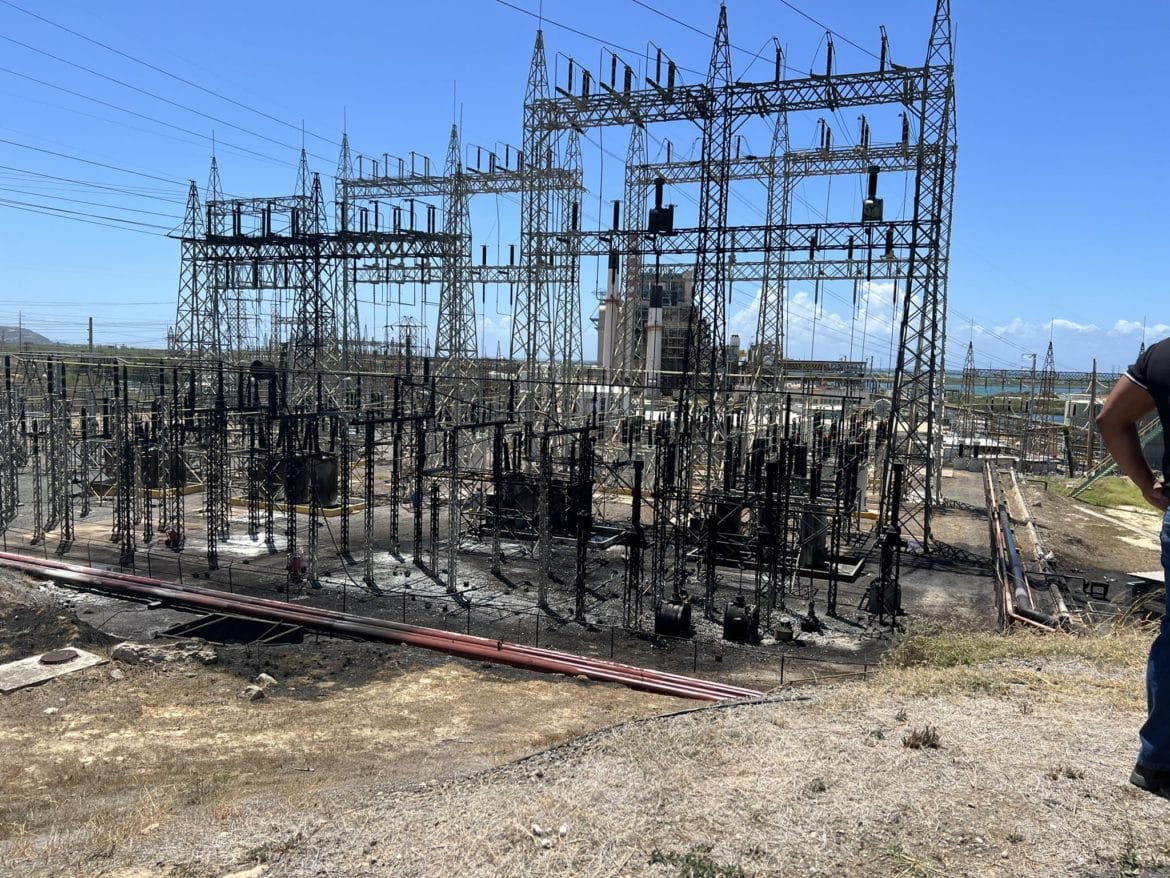The area in the switchyard where the Central Costa Sur fire occurred, which caused the general blackout last Wednesday, should have been renovated four months ago, in December 2021, according to the original infrastructure plan through which the Puerto Rico Electric Power Authority (PREPA) will access $10.7 billion in federal recovery funds. But, after LUMA’s arrival in June 2021, as operator of the transmission and distribution system, the processes were delayed. The completion date for the repairs at the plant was postponed to February 2023, according to documents from the Puerto Rico Energy Bureau and the Federal Emergency Management Agency (FEMA), that the Center for Investigative Journalism (CPI, in Spanish) reviewed.
Avería en breaker de salida de Unidad #5 de Costa Sur al 230kv ocasionó la salida de las unidades 5 y 6 de la Central. El sistema de protección del sistema eléctrico sacó de servicio el resto de las unidades que estaban generando. pic.twitter.com/ZFAR6GocY2— Autoridad de Energía Eléctrica (@AEEONLINE) April 7, 2022
The recovery work in Costa Sur, Guayanilla, included replacing four switches of the 230-kilowatt transmission lines because they have already completed their useful life and are obsolete.










